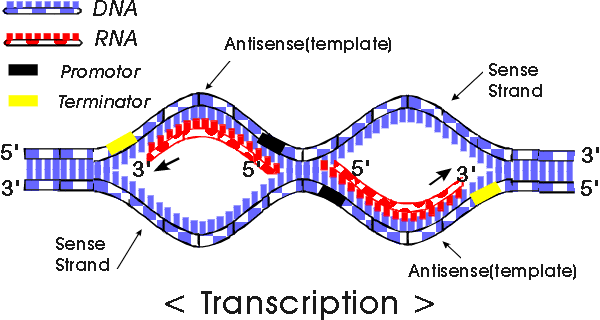So how is it that we get from DNA and genes to proteins and cells? The first step is to take the "code" from the DNA and transcribe it into ribonucleic acid (RNA). The obvious question is why is it necessary to transcribe the DNA into RNA? The reason for this is a matter of location. The DNA is located inside the nucleus of the cell while the mechanism to make proteins is located outside the nucleus in the cytosol. The only way to transport this "code" outside the nucleus is to turn it into RNA which is only single stranded. Now that we know why, lets take a look at how. One of the most important players in this process is RNA polymerase which moves along the uncoiled strands of DNA and matches the RNA to the sequence on the DNA. How does the RNA polymerase know where to start and stop? Each gene has a beginning and an end. |
 |
